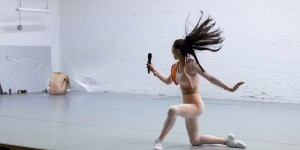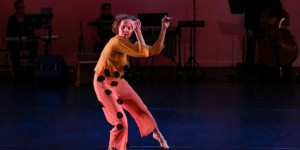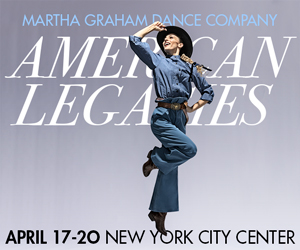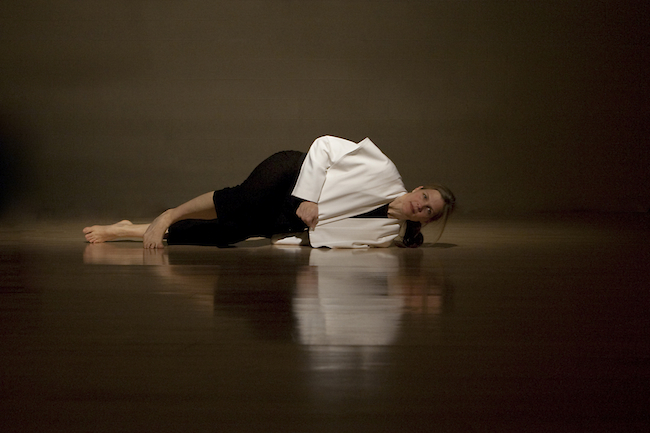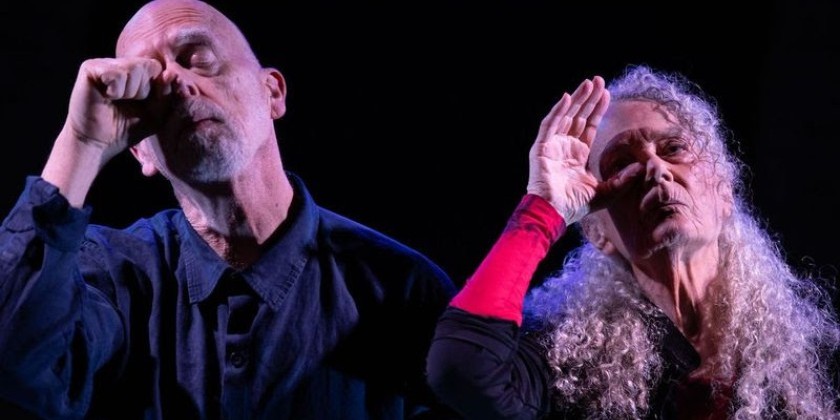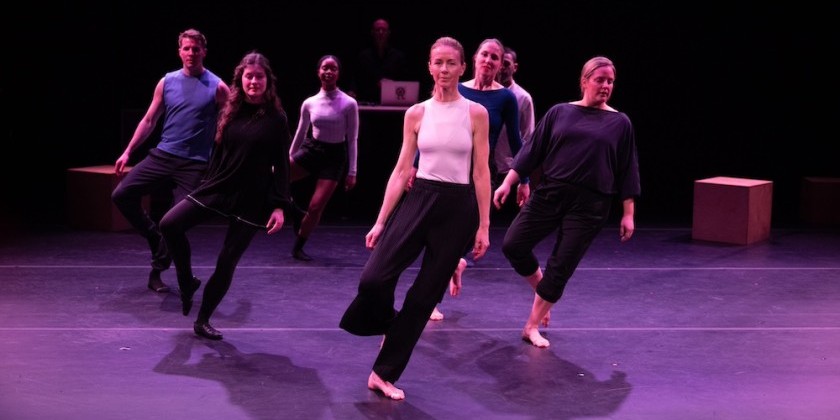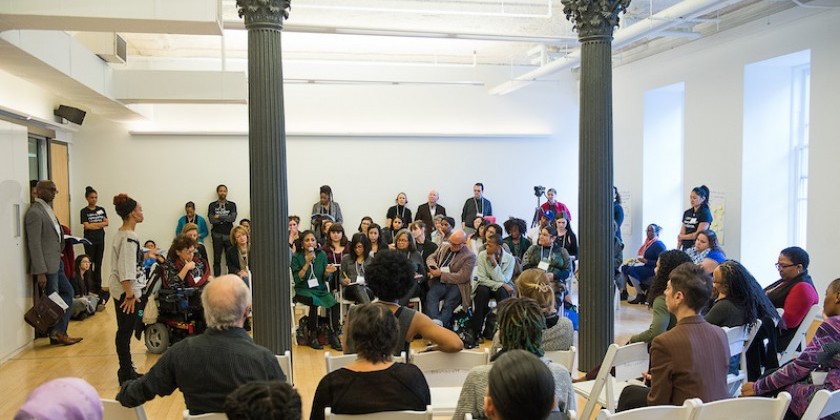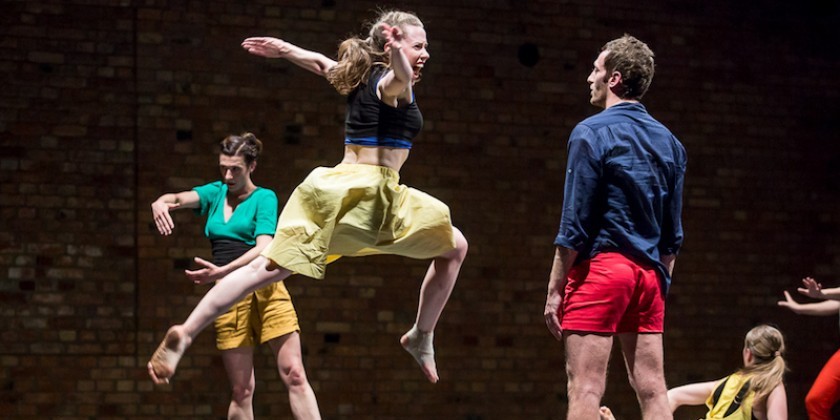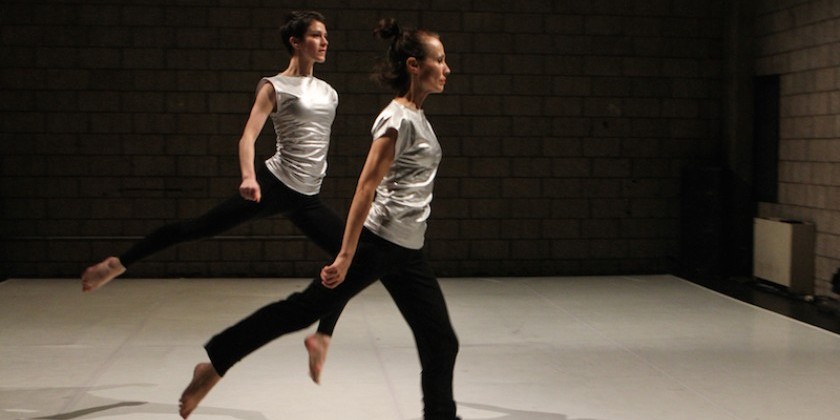IMPRESSIONS: Soaking WET
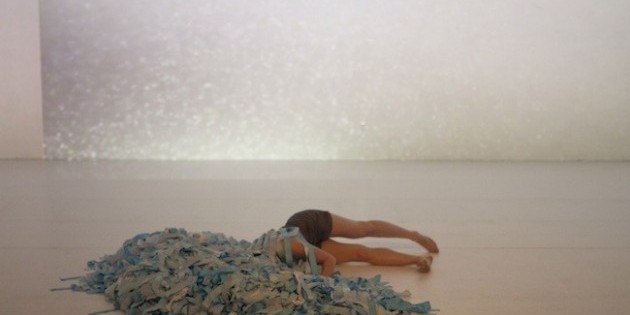
The How and the Why of It by Katherine Longstreth with Christy Funsch // Soaking WET by Motley Dance and Amy Miller
IMPRESSIONS: Soaking WET
Curated by David Parker
Produced by Jeffrey Kazin
Lighting design by Jay Ryan
The How and the Why of It
Katherine Longstreth with Christy Funsch
Soaking WET
Motley Dance and Amy Miller
Garnet Henderson for The Dance Enthusiast
April brought the 25th installment of the Soaking WET series to the West End Theater, curated by David Parker and produced by Jeffrey Kazin, both of the Bang Group. This iteration of the series, which unites artists of diverse disciplines and levels of experience, featured a split bill with two short performances per day.
The first show began with Katherine Longstreth’s O What, performed by Christy Funsch. Dancing to “Oh, What a Beautiful Mornin’” from Oklahoma!, Funsch devised a sunrise with a flashlight and a tent with a tutu. She ended the piece by planting herself face down on a bright green patch of artificial grass. The piece was playful, evoking childlike images, and Funsch practiced a tender care for and interest in her surroundings.
Next, Longstreth, clad in a white dress-coat over black clothing, performed her own choreography in O Where. However, only briefly did this coat appear as a traditional covering. Longstreth constantly manipulated the garment, turning it inside out and rotating it around, all while it remained on her body. She ended the piece by removing and then folding the coat. The movement of this jacket had a hypnotic effect, and Longstreth performed the piece with an intense sense of purpose.
|
Following O Where was another solo, Moving Still(s) choreographed and performed by Christy Funsch. Funsch danced beautifully, and the work contained several satisfying dynamic shifts. However, it lacked an overall sense of momentum and felt too long.
Last, Longstreth returned to perform her new work Narrative Medicine with Kelly Bartnik. Working with several props, the two women displayed a moving vulnerability and immaculate consideration for details. At the piece’s beginning, they rolled large wooden spools from one side of the stage to the other. These spools later doubled as seats. On one side of the stage, a piece of white fabric hung from a metal frame; when illuminated with a flashlight, it evoked an X-ray image in a doctor’s office.
.jpg) |
| Katherine Longstreth and Kelly Bartnik. Photo Jeffrey Kazin. |
During Narrative Medicine, Longstreth and Bartnik expressed curiosity about each other, accented with moments of confrontation. In one striking moment, Bartnik recoiled from Longstreth’s repetitive touch as if reluctant to expose some secret of her body. After three solo works, watching two people make eye contact and negotiate their physical relationships was engrossing.
First, in the second show was an excerpt of Elisabeth Motley’s Drill Piece. This work featured live music by both the dancers and the band, Colonna Sonora. At the piece’s beginning, they used a looping pedal to generate a layered score of dialogue, and this method reappeared later in the work. Motley’s three dancers were exuberant throughout and alternated between playfulness and solemnity. At times, the movement exploded into the space, with the dancers hurtling apart and then drawing close again. In other moments, they snapped into position like a tiny army, and carved angular pathways across the floor.
Motley’s dancers shifted between projecting a desire to be seen and a need to hide. This was manifested at the end of the excerpt, when they held up cards with various commands for the audience. One of them read, “LOOK AT ME,” but the next one said, “WHY ARE YOU LOOKING AT ME?”
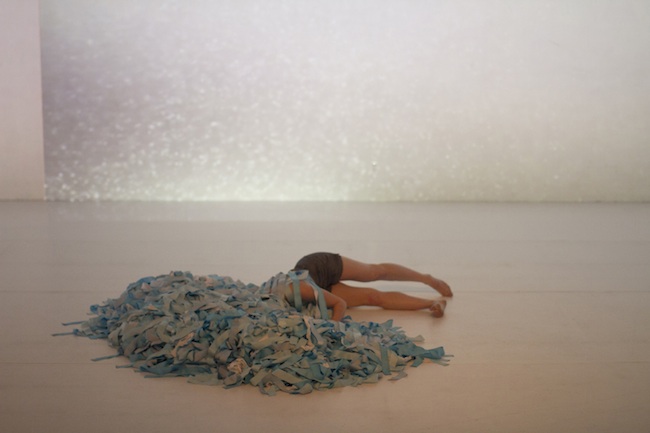 |
| Motley Dance. Photo Victoria Masters. |
Last on the program was Amy Miller’s enthralling solo, Trust the Future as Little as Possible. Miller is a singular performer due to her complete focus and clear commitment to every movement. The solo began with Miller onstage in a column of light. The lighting design, sensitively executed by Jay Ryan, was in constant flux throughout the work. Different shapes appeared, illuminating sections of the stage with short blackouts in between. At times, the lights moved like a car’s headlights. Miller danced even in the blackouts, and these were some of the most compelling moments in the piece. The sound of her breath, the intonation of her footsteps in the dark, and the swish of moving fabric conspired to create a sweet suspense.
These dances were all complemented by the venue itself. The West End Theater places the audience close to the performers, but also possesses high, dramatic ceilings and columned walls. This intimate grandeur lent an intriguing element to everything that crossed its stage.
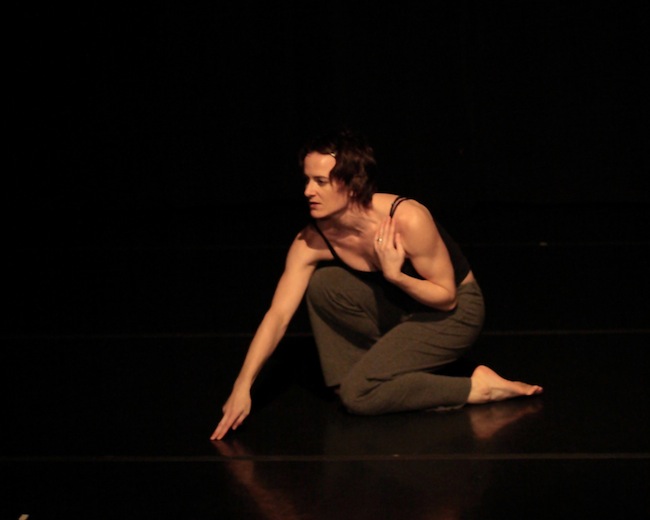 |
| Amy Miller. Photo Eric Bandiero. |






